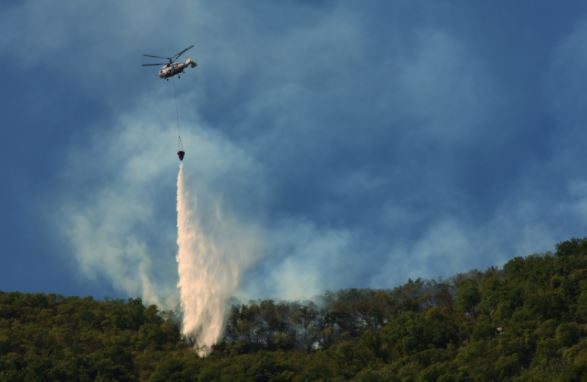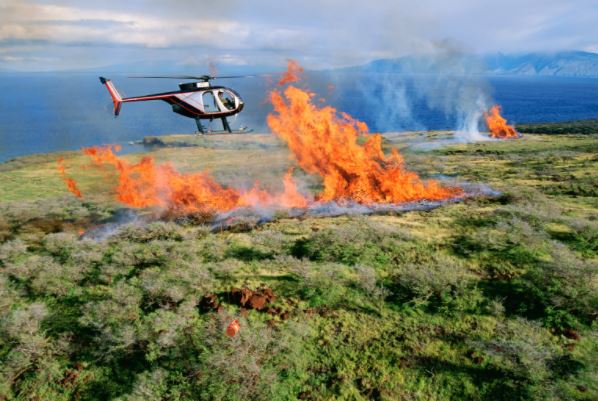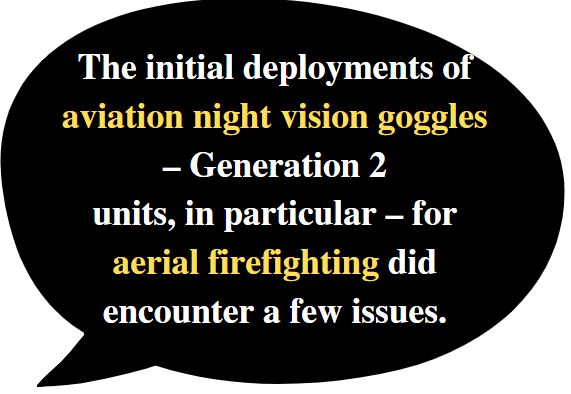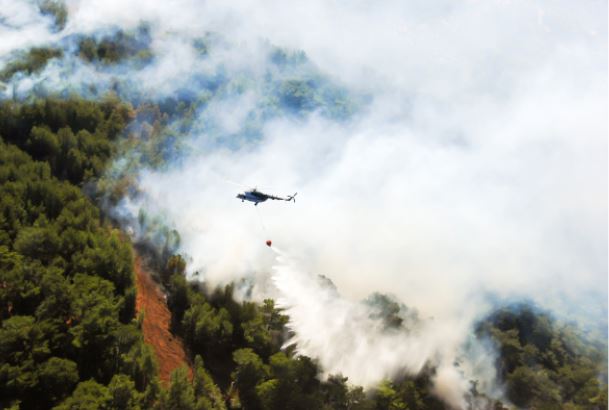Nowadays, more and more fire service agencies utilize aviation night vision goggles to improve their aerial firefighting efforts.
Wildfire blazes are becoming more ferocious and prevalent – that’s the unfortunate reality.
One of the best approaches to diminish fires is at night. During nighttime, humidity increases, temperatures drop, and the winds die down. These are ideal conditions to thwart the severity of the blaze.
As a result, more and more fire agencies have instructed their aerial firefighters to get acclimated with aviation night vision goggles.
In today’s post, we’ll look into this night vision innovation and how it improves the aerial firefighting efforts of fire agencies around the world.
Aviation Night Vision Goggles: Where It Began

The origin of night vision goggles can be traced back in the Second World War.
This was when the United States and Germany both deployed several night vision systems toward the end of that tumultuous era.
Now, those night vision systems are referred to as “Generation 0.”
However, it wasn’t until the United States engaged in the Vietnam War that the night vision systems – now classified as “Generation 1” systems – were utilized more.
These Generation 1 systems, which required a small amount of illumination, such as moonlight or city lights, to function, eventually paved the way for Generation 2 units.
Generation 2 goggles were first used during the Gulf War. These night vision units were obviously more advanced and robust than their predecessor.
Generation 2 aviation night vision goggles were a definitive improved version from what the earlier types were. At the start of the 21st century and when night vision technology continued to advance, Generation 3 aviation night vision goggles became available.
Today, Generation 3 goggles are still the best on the market. However, there are versions of it superseded by military-grade models. These are variously referred to as “Generation 3+ goggles” or “Generation 4” systems.
These advanced versions have improved optical features, lighter to carry, and have more optimal longevity than the earlier generations.
Firefighting with Aviation Night Vision Goggles
In conjunction with the military’s utilization of night vision goggles in defense and war, firefighting agencies in the United States have also started to embrace night vision technology.

This effort started in 1974 when the US Congress allowed the USDA Forest Service to use special funds in improving their wildfire defense efforts.
The USDA Forest Service used special funds to investigate new strategies and techniques to reduce wildfires’ severity.
However, the USDA Forest Service wasn’t the sole agency trying out night vision technologies The Los Angeles County Fire Department, in particular, conducted their own experiments as well.
The first recorded use of the aerial firefighting efforts during nighttime of the Los Angeles County Department was in June 1974. The department used a Bell 204 helicopter furnished with a fixed tank.
They dropped water on a wildfire happening at the Angeles National Forest during that time.
In 1976, the USDA Forest Service procured its first NVG-ready helicopter. It was a Bell 212 situated on the Los Padres National Forest’s Rose Valley Helibase.
In the following year, a second NVG-ready Bell 212 was placed at the Angeles National Forest’s Tanbark Heliport.
Early Issues

The initial deployments of aviation night vision goggles – Generation 2 units, in particular – for aerial firefighting did encounter a few issues:
- Generation 2 goggles had reduced functionality.
- The field of view was only 40°.
- The visual acuity was only between 20 and 50.
- The fuller design of the aviation night vision goggles prevented the operators from looking at essential flight instruments.
- The night vision device was susceptible to losing visual image – which is referred to as “blooming” – when faced with glares reflecting on the windscreens or abrupt high lighting.
A Disaster Occurs
After the aerial firefighting using night vision technology programs were implemented, tragedy struck.
In 1977, a United States Forest Service Rose Valley fire helicopter and a Los Angeles County helicopter collided mid-air.
The two aircraft collided on the way to the Angeles National Forest heliport. Both the US Forest Service and LA County helicopters were flying with aviation night vision goggles. One pilot died, and the other people on the helicopters were critically injured.
This occurrence nearly halted the night vision programs put into effect during that time. The LA County Fire department suspended the NVG program, while the US Forest Service did not.
The latter continued the NVG operations from 1978 until 1983. In 2005, the program was discontinued due to limited use and rising expenditures.
The Resurgence of Aviation Night Vision Goggles in Aerial Firefighting
The 21st century paved the way for the resurgence of aviation night vision goggles.
The LA County Fire Department went back into using night vision goggles – but they did so carefully. They restarted the program in 2001 but only with limited usage. It did transition eventually into a regular use in 2005.
Fire agencies from other cities and counties eventually followed suit.
On the other hand, the US Forest Service did not resume their NVG program. On top of that, they imposed strict night flying rules over areas managed by their organization.
The California Department of Forestry and Fire Protection has also not pursued NVG-assisted flights. This is despite their state’s attempt to fund several NVG-equipped helicopters for their organization to use.
Fighting Fires at Night
There are two tactics on fire suppressant loading for effective aerial firefighting:
- Ground-fill
- Hover-fill
On the other hand, the hover-fill method utilizes a snorkel mechanism that extends from the helicopter tank to load from a source before dropping the suppressant on fire. The flight crew assists the filling by attaching the fire hose to the adapter.
The adapter is then connected to the helicopter tank once the aircraft has descended. The rotor continues to spin during the load-up so the helicopter can immediately take off when its tank is filled.

Many operators have reported that the hover-fill method takes less time to do.
On top of that, fewer crew members are needed to complete the task.
However, the safety factor may be compromised if you do the hover-fill method at night.
Many operators have reported that there’s a “white-out” upshot on aviation night vision goggles. Pilots have stated that when the aircraft’s rotor wash stirs up the water vapor. This occurrence is particularly common over large bodies of water.
Hoist Rescues
Similarly, there are two approaches when it comes to the hoist-rescue strategy: 1) European style; 2) traditional hoist.
The traditional hoist method allows the aircraft to hover directly over the mark. While the helicopter is hovering, the lifting and lowering of the crew transpire.
On the other hand, the European method refers to the air medic’s slow forward move as they are being lowered.
This method has two primary advantages: there’s less danger on the ground or the hoist if an accident happens (engine failure, etc.), and there is less tendency for the individuals on the hoist to be twirled around by the rotor.